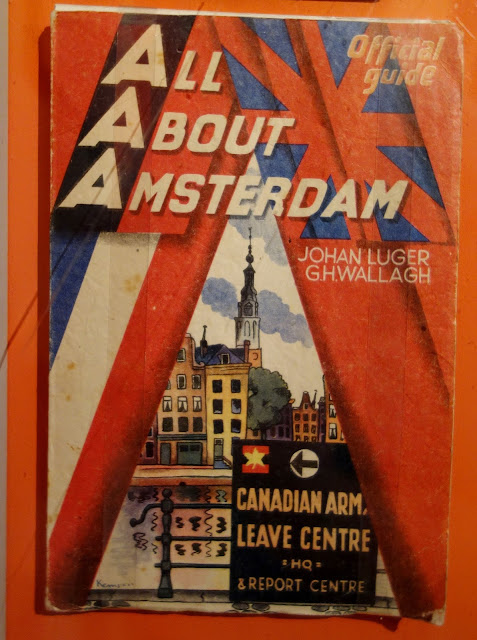Amsterdam is steeped in Jewish history, and has had a continuing Jewish community for the last 370 years. Despite years of religious tolerance, unlike Denmark, the Dutch community did little to stop the advance of the Nazi extermination program. While this statement is not true of individual Netherlanders, as a state, the failure to protect longstanding members of the community (as they did in Denmark) ultimately resulted in a near annihilation of the Jews in Amsterdam. The Holocaust deeply affected the Jewish community, killing some 80% of the some 80,000 Jews present at that time in Amsterdam.
Permanent Jewish life in Amsterdam began with the arrival of pockets of Marranos and Sephardic Jews at the end of the 15th. Although many Sephardim had been expelled from Spain and Portugal in 1492 (the Reconquest) others remained in the Iberian peninsula, practising Judaism in secret. In 1593 many arrived in Amsterdam. These Jews were important merchants and persons of great ability. Their expertise contributed materially to the prosperity of the country. They became strenuous supporters of the House of Orange and were in return protected by the state.
The first Ashkenazim in Amsterdam were refugees from the Thirty Years War. Their numbers soon swelled, eventually outnumbering the Sephardic Jews at the end of the 17th century. By 1674, some 5,000 Ashkenazi Jews were living in Amsterdam, while 2,500 Sephardic Jews called Amsterdam their home. Many of the new Ashkenazi immigrants were poor, contrary to their relatively wealthy Sephardic brethren. They were only allowed in Amsterdam because of the financial aid promised to them and other guarantees given to the Amsterdam city council by the Sephardic community, despite the religious and cultural differences between the Yiddish-speaking Ashkenazim and the Portuguese-speaking Sephardim. (above in blue from wikipedia)
So our explorations of the Jewish Quarter began at the Jewish History Museum - which has an excellent exhibit in the old synagogue of the various Jewish religious rituals and celebrations.
this painting depicts the family of mourners sitting shiva and the minion of men to say the prayers-
a kit for ritual circumcision
the Jewish wedding ceremony under the "canopy" - here a large veil draped over the couple -
in the next section - an exhibit on various aspects of the Jewish diaspora - including the islands and colonies which were once part of the Dutch Empire-
here a statute erected to the dock workers who went on strike to protest the initial roundup of the Jews by the Nazis during occupation. The strike was ineffective in stopping the deportation of the vast majority of the Jews (80% of whom died in the death camps)
a Holocaust Memorial has been erected inside the ruins of the theater where the Nazis gathered the Jews to put them into rail cars for deportation.
those numbers are horrifying - and only really made possible by this document that gave the Nazis the location of all the Jewish families in Amsterdam-
we later visited the Portuguese Synagogue- in use today- but unheated and without electricity so services in the winter are held in this winter synagogue in a small section of the property.
a former mikvah (ritual bath) located at the synagogue-
they have a permanent installation of a sukkah for their Sukkot festival -
a permanent room on the grounds for mourning and funeral services
a couple of photos of the interior of the main synagogue-
It must be quite magnificent all lit up with the candles -
we also toured the Dutch Resistance Museum - which is an excellent exploration of the various choices made by individual Dutch people to combat the spread of Nazism and to lend assistance to the Jews. It covered the period of the occupation through liberation by the Allied forces in Europe -
a striking gallery on the death camp experience of the Jews was harrowing but educational
Although things started out so well centuries back for the Jews in Amsterdam, the community as a whole did not react to the Nazi orders the way Denmark did (who said - "we are all Danes" and refused to identify specific families as one religion or another)... and the reason that only Denmark - of all countries of the world is recognized as a Nation- of Righteous Gentiles at Yad Vashem in Israel.
Today the Jewish population in Amsterdam is small, after the war ended - what few Jews returned were given no help in reestablishing their households (many of which had been looted of all their possessions) and most moved on... a sad tale and at least to me, a blot on the boasts that Amsterdam makes of being such an open and free society for centuries.... but which in no way undercuts the heroic acts of individuals who stepped forward to hide and assist Jews during the war. so many that it has the largest number of recognized individuals on Yad Vashem's Righteous Gentiles lists.
A checkered story with many shades of grey explored so well in the Resistance Museum, so we make a very strong recommendation for that one.
In the next post - we explore the city history at the Amsterdam Museum. So stay tuned!
















































No comments:
Post a Comment